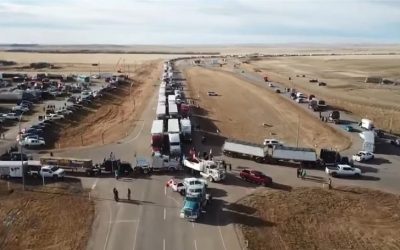Western Canadian cities once again dominated the Maclean’s Most Dangerous Cities list. But while the rankings are useful for policy makers, they need to be taken with a grain of salt. Despite media hype, Canada's cities are safe.
The most visible metric on which to judge a city's safety is the homicide rate. While it is by no means the only relevant metric, it is easily comparable across national boundaries (as opposed to a crime severity index), and is rarely under-reported as are some other violent crime statistics.
What may surprise some is that the Canadian city with the highest homicide rate in 2010 was Prince George, BC, with a rate of 9.5 per 100,000 residents. Of course, that adds up to only seven victims. Two were committed by a serial killer, which amounts to a tragic anomaly. Much of the rest is attributable to turf wars between gangs—a cyclical phenomenon beyond the control of police, and which rarely affects the general population.
Bigger Western cities such as Edmonton (3.1), Regina (4.0), Saskatoon (4.4), Winnipeg (3.2), and Victoria (2.9) had among the highest homicide rates of Canadian cities in 2010. While high by Canadian standards, comparing to US cities (2009) like Newark, New Jersey (28.7), Detroit (40), Baltimore (37.3), St. Louis (40.3), and New Orleans (51.7) offers some perspective. Safer big Canadian cities such as Toronto (2.2), Ottawa (1.5), Vancouver (1.8), and Montreal (1.9) compare favourably with extremely safe American cities such as Seattle (3.7), Portland, Oregon (3.4), and San Jose (2.9). Only 4 American cities over 100,000 had lower homicide rates than Toronto, none lower than Ottawa's.
Given the 24 hour news cycle, it is understandable that people think of cities as dangerous. For instance, Edmonton, had nearly one homicide per week in 2011 (47). If each homicide story is in the news for 3-4 days, people are essentially hearing about murders in the city every second day. In reality, the homicide rate will only increase to roughly 5.6 for 2011(according to Edmonton Police Service). That is the same rate as New York and San Francisco. This is hardly an unflattering comparison, especially given that 2011 was considered a freakishly bad year for Edmonton. Make no mistake: New York and San Francisco are very safe cities.
It's important to keep in mind that a few extremely dangerous neighbourhoods tend to skew crime statistics. Such is the case in Washington, DC. Anacostia in DC's 7th District is among the worst neighbourhoods in the developed world. In 2009 there were 75 homicides between DC's 6th and 7th Districts—a ten miles strip south of the Potomac—4 less than all of Saskatchewan and Manitoba in 2010. The two districts saw a total of 129 homicides in 2003 alone. The author can attest that it is a genuinely dangerous area (despite being significantly safer than it was in the 90s). There are no equivalent Canadian neighbourhoods.
It's also important to remember that people rarely kill strangers. The rate of homicides committed by strangers is a mere 0.2 per hundred thousand. With rare exceptions, walking down the street in Canada is safe.
To further put the risk of homicide in context, consider how much more likely you are to be the victim of a freak accident. According to US Center for Disease Control data, in 2009 the rate of deaths from unintentional injuries per hundred thousand was 38.4. Of these, 11.2 are from motor vehicle related accidents. Another 10.3 are poisoning deaths. Falling accounts for 8.1. Yet, few people think twice before getting in a car or climbing a ladder.
For rural people who consider cities unsafe, it is worth noting that rural residents have shorter life expectancies than urbanites. Part of this is because they have less access to medical treatment, and there are less people around to help them if they're in trouble—say, if their car breaks down in winter. Additionally, there are 13.7 work related deaths per 100,000 agricultural workers per year. It makes more sense to fear stepping on to a farm than visiting Downtown Edmonton.
While there is no reason to be complacent about crime, there is also no need to panic. Canadian cities are safe. Even Western cities.


